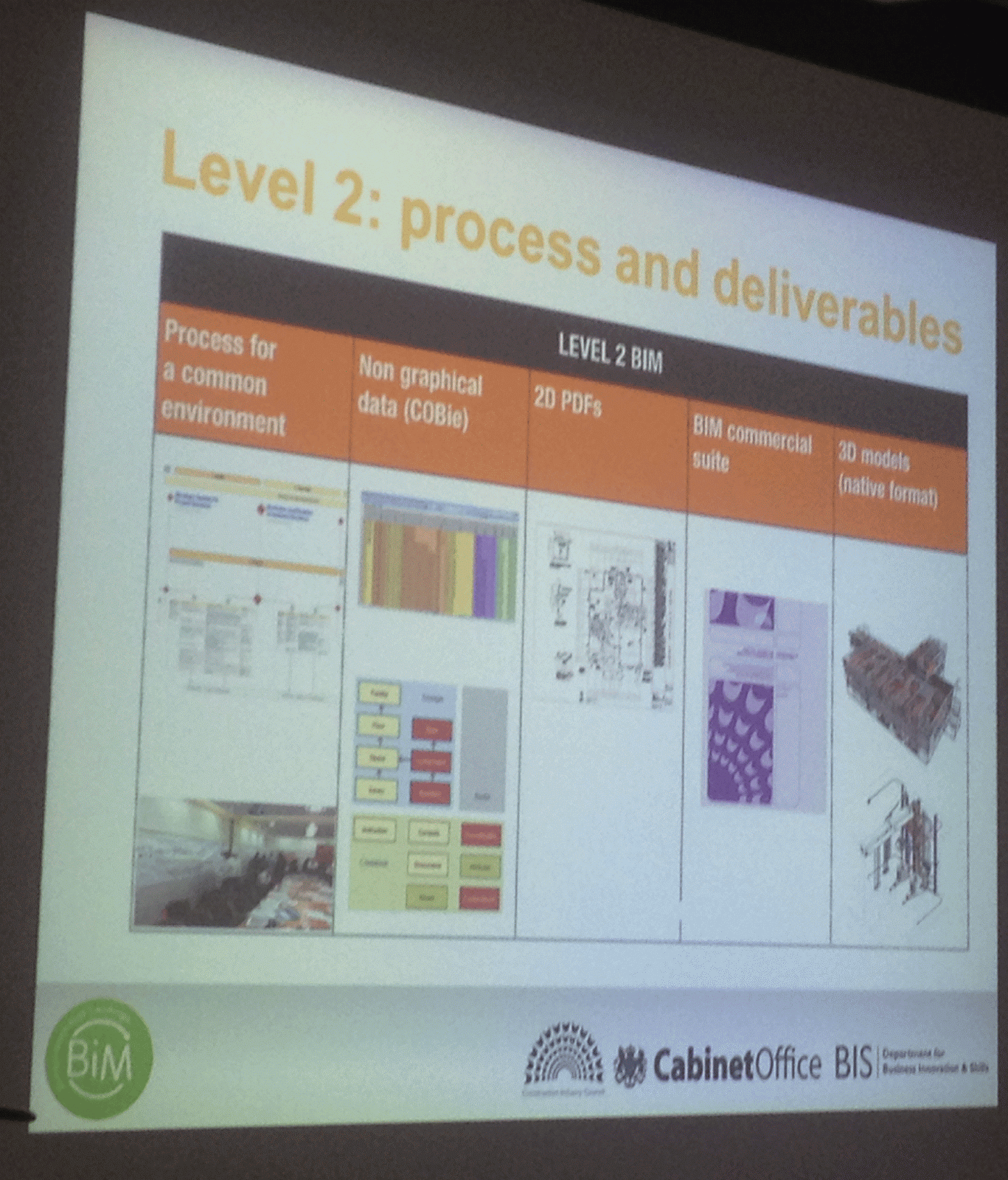Do they even exist? Does anyone know if Level 3 and Level 4 BIM exist?
In my opinion they DON'T exist yet. They might in the future future (definitely Level 3 BIM) but not at this moment in time. To be honest, many in the industry are struggling with Level 1 and Level 2 let alone Level 3 or Level 4??? Technologically and contractually, Level 3 and Level 4 (I don't even know what Level 4 BIM is) BIMs are not possible.
My polite request to developers, lawyers and project managers: Please do not refer to Level 3 and/or Level 4 BIM in your BIM requirements. They don't exist at this moment in time. (full stop)
For reference, see the famous diagram below. The UK industry is targeting to achieve Level 2 BIM (private clients as well as government) by 2016. Level 3 BIM is an idea at the moment and not defined fully.
So what is Level 2 BIM? What BIM deliverables should be included in a project that is aspiring to achieve Level 2 BIM?
See an image below that concludes everything. This was taken during a presentation by our 'BIM Mayor of London'. You know who he is!
In summary:
Level 2 BIM includes:
Level 2 BIM DOESN'T mean***:
In my opinion they DON'T exist yet. They might in the future future (definitely Level 3 BIM) but not at this moment in time. To be honest, many in the industry are struggling with Level 1 and Level 2 let alone Level 3 or Level 4??? Technologically and contractually, Level 3 and Level 4 (I don't even know what Level 4 BIM is) BIMs are not possible.
My polite request to developers, lawyers and project managers: Please do not refer to Level 3 and/or Level 4 BIM in your BIM requirements. They don't exist at this moment in time. (full stop)
For reference, see the famous diagram below. The UK industry is targeting to achieve Level 2 BIM (private clients as well as government) by 2016. Level 3 BIM is an idea at the moment and not defined fully.
So what is Level 2 BIM? What BIM deliverables should be included in a project that is aspiring to achieve Level 2 BIM?
See an image below that concludes everything. This was taken during a presentation by our 'BIM Mayor of London'. You know who he is!
In summary:
Level 2 BIM includes:
- CDE platform
- non-graphical data, either COBie or client specified data format
- 2D PDFs
- BIM protocol documents
- 3D models, native as well as a federated
Level 2 BIM DOESN'T mean***:
- Live cost data to BIM models
- Live time data to BIM models
- Live FM data to BIM models
- Live asset management data to BIM models
***NB: All of the above "DOESN'T mean" can be linked with 3D geometry produced by Level 2 BIM process. In other words, 3D geometry produced as a result of Level 2 BIM process can have external link to a database that holds FM/AM/Cost information or in some cases that information can be embedded within 3D geometry. Also, if you manage to achieve all of the above "DOESN'T mean" doesn't mean that you are doing Level 3 or Level 4 BIM. You are still in 'silloed' Level 2 BIM where everyone works in their own BIM environment and contributes to a federated BIM environment.

